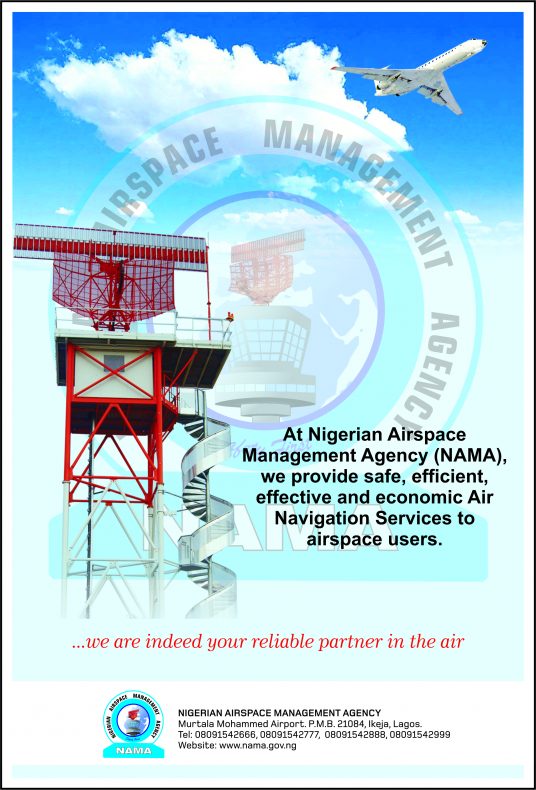ANTHONY PATRICK OMOH
The Chairman of CITA Energies, Dr. Thomas Ogungbangbe, has called for the urgent restoration of Nigeria’s Jet A-1 (aviation fuel) pipeline from Atlas Cove to the airports, describing it as a national priority that could save millions of dollars and ease pressure on Lagos roads.
He made this known at the CITA Energies Colloquium themed “Aviation Fuel Business in Nigeria: The Scenario and the Metaphor” held on October 23, 2025, at Radisson Blu, Lagos.
Dr. Ogungbangbe said reviving the Jet A-1 pipeline and related fuel infrastructure would not only reduce operational costs but also improve efficiency, safety, and environmental sustainability within the aviation sector.
“Nothing is wrong with the pipeline,” he said. “With normal pressure testing and government cooperation, it is not impossible to restore it. If we are able to restore that line, it will keep away not less than 100 trucks per day off Lagos roads. You just need to get the vessel to come from Atlas Cove and receive at the airport: no road movement, no traffic disruption.”
Pipeline accident and closure
He recalled that the facility once served the industry efficiently until it was shut down following an accident in 1998, which led the government of that time to suspend its operation.
“That pipeline was there, it was functional, and it was run effectively until an incident made the government suspect it as a root cause and subsequently fund its closure,” Ogungbangbe said. “We need to revisit that decision now that technology, supervision, and safety standards have advanced.”
According to him, restoring the Atlas Cove Jet A-1 line would enhance the country’s fuel distribution efficiency, lower transportation risk, and strengthen the aviation industry’s supply chain resilience.
Refineries and self-sufficiency in Jet A-1 production
Dr. Ogungbangbe lamented that despite having several refineries since the 1970s, Nigeria never consistently produced Jet A-1 until recently. He noted that the local refining sector historically focused on producing household kerosene (DPK), which shares chemical similarities with jet fuel.
“Nigeria never produced jet fuel consistently until recently, despite having refineries since the 1970s,” he said. “What we produced was acid kerosene, also called domestic kerosene, which shares the same hydrocarbon structure with Jet A-1. That’s why the family of products is called ‘grandmother’s kerosene.’ We must now make the shift from dependency to productivity.”
He stressed that refining capacity and fuel storage should be viewed as national strategic assets, not just commercial operations, adding that energy independence remains the backbone of aviation sustainability.
Economic and operational losses
The CITA Energies boss highlighted the heavy losses incurred by operators due to the absence of domestic harbor and storage infrastructure. He disclosed that before the emergence of the Dangote Refinery, companies spent substantial sums on imports from Togo.
“Before the advent of Dangote Refinery, we were spending not less than half a million dollars every month to bring in products from Togo,” Ogungbangbe revealed. “The irony is that the same water we use for importation is right in our own frontage here in Nigeria. We are simply exporting opportunities.”
He explained that Togo currently serves as the main hub for aviation fuel importation into West and Central Africa, a position Nigeria could easily reclaim through infrastructure restoration and government support.
“We spend millions of dollars every year importing fuel through another country while we have the same potential here,” he added. “That must change.”
Missed opportunities in maritime support
Dr. Ogungbangbe also lamented that most vessels lifting petroleum products from Nigeria go abroad for dry docking and maintenance, denying the country significant economic returns.
“Most of the ships that lift products from Nigeria work from here, but when they need dry docking or repairs, they go to other countries,” he said. “Some of them pay as much as €800,000 for just two weeks of docking in Senegal or elsewhere. These are lost opportunities that we can easily recover.”
He called for deliberate investment in local ship repair yards, docks, and maintenance facilities, noting that such development would complement aviation logistics and generate employment.
Safety, modernization, and Jet A-1 supply integration
Dr. Ogungbangbe further proposed integrating hydrant refueling systems into existing and new airports to improve safety and operational efficiency.
“We should also consider building hydrant systems into our airports,” he stated. “That way, the safety issues that come with manual pipeline movement can be eliminated, and operations become smoother and more secure.”
The CITA Energies Chairman emphasized the need for collaboration between the aviation, maritime, and energy sectors, underlining that the future of Nigeria’s transport logistics depends on unified planning and investment.
Ogungbangbe projected that Nigeria’s Jet A-1 demand will grow exponentially in the coming decades, driven by population growth and economic expansion.
“With a population of about 250 million, even if 10 percent travel regularly, that’s 25 million travelers already,” he said. “If we project for the next 20 years, the growth potential is enormous, and we must prepare our infrastructure today.”






















